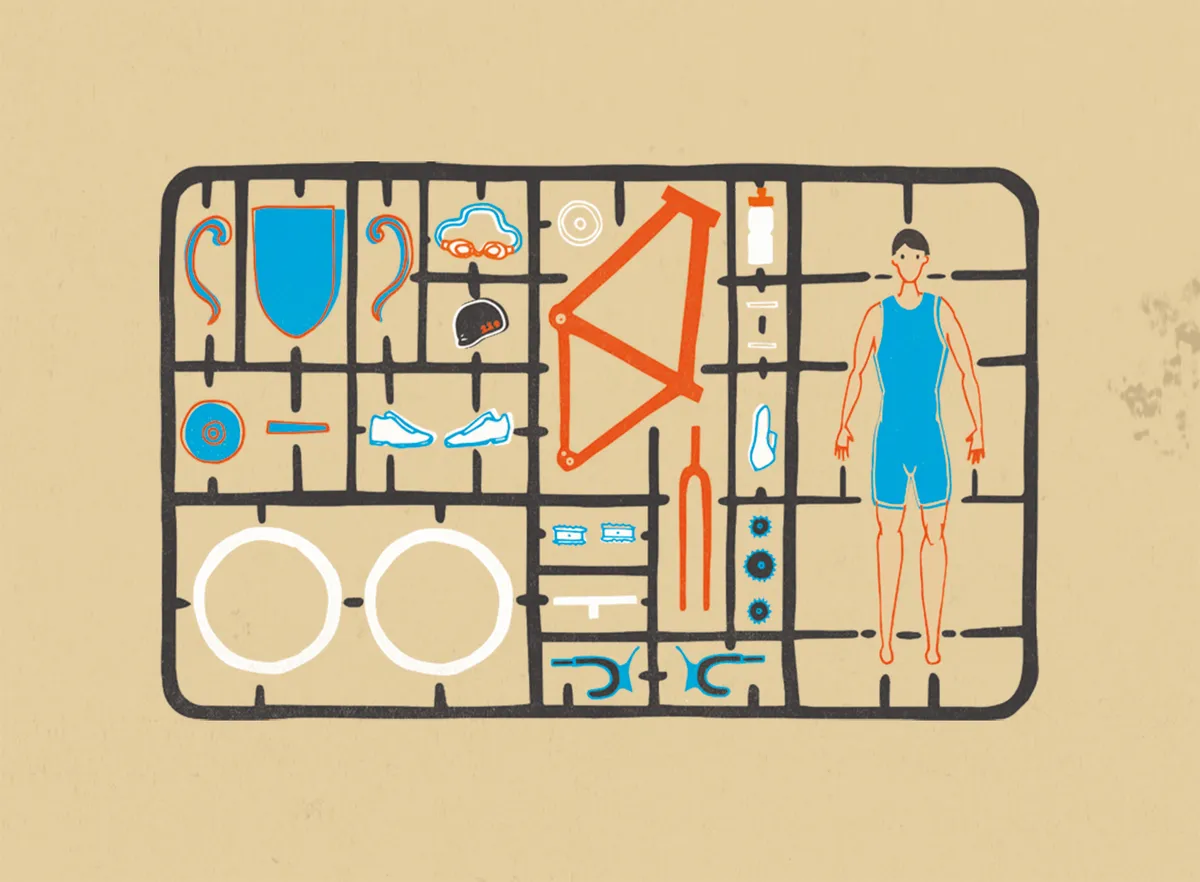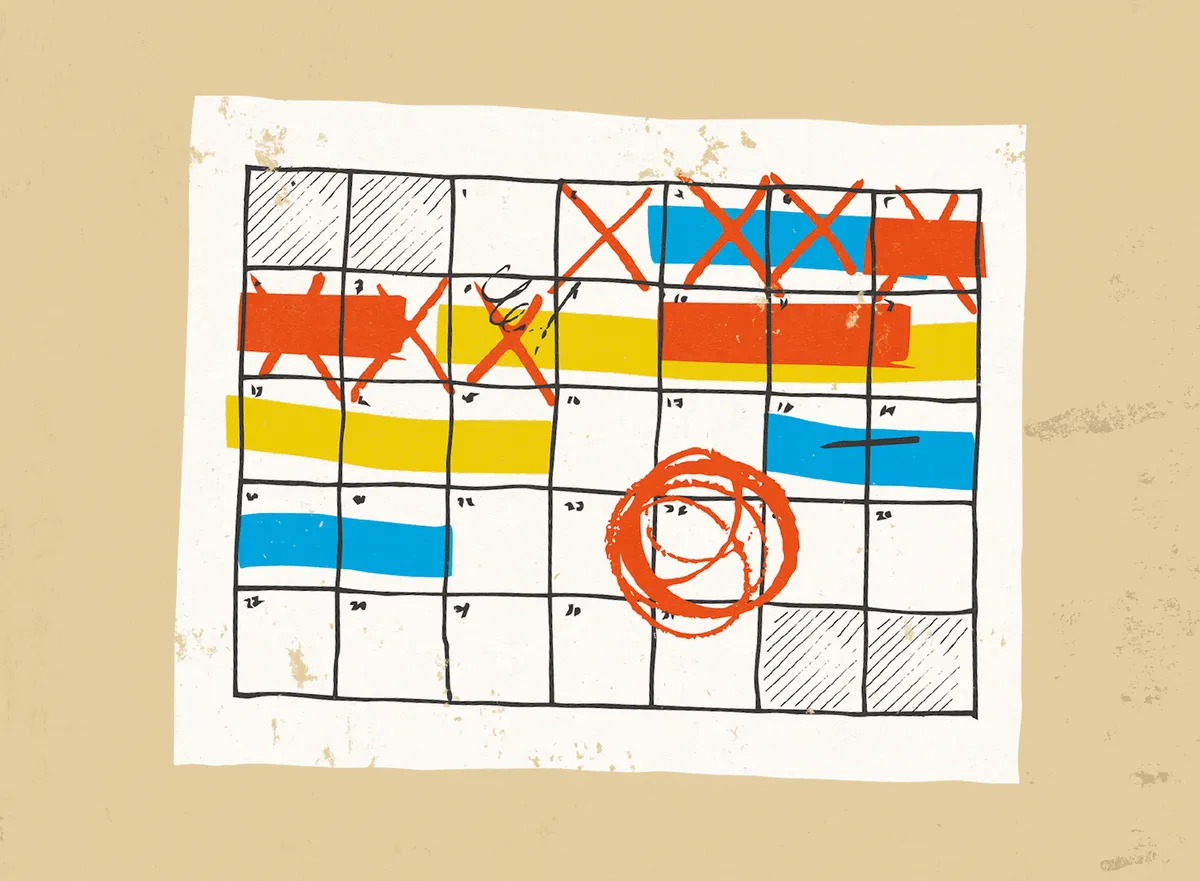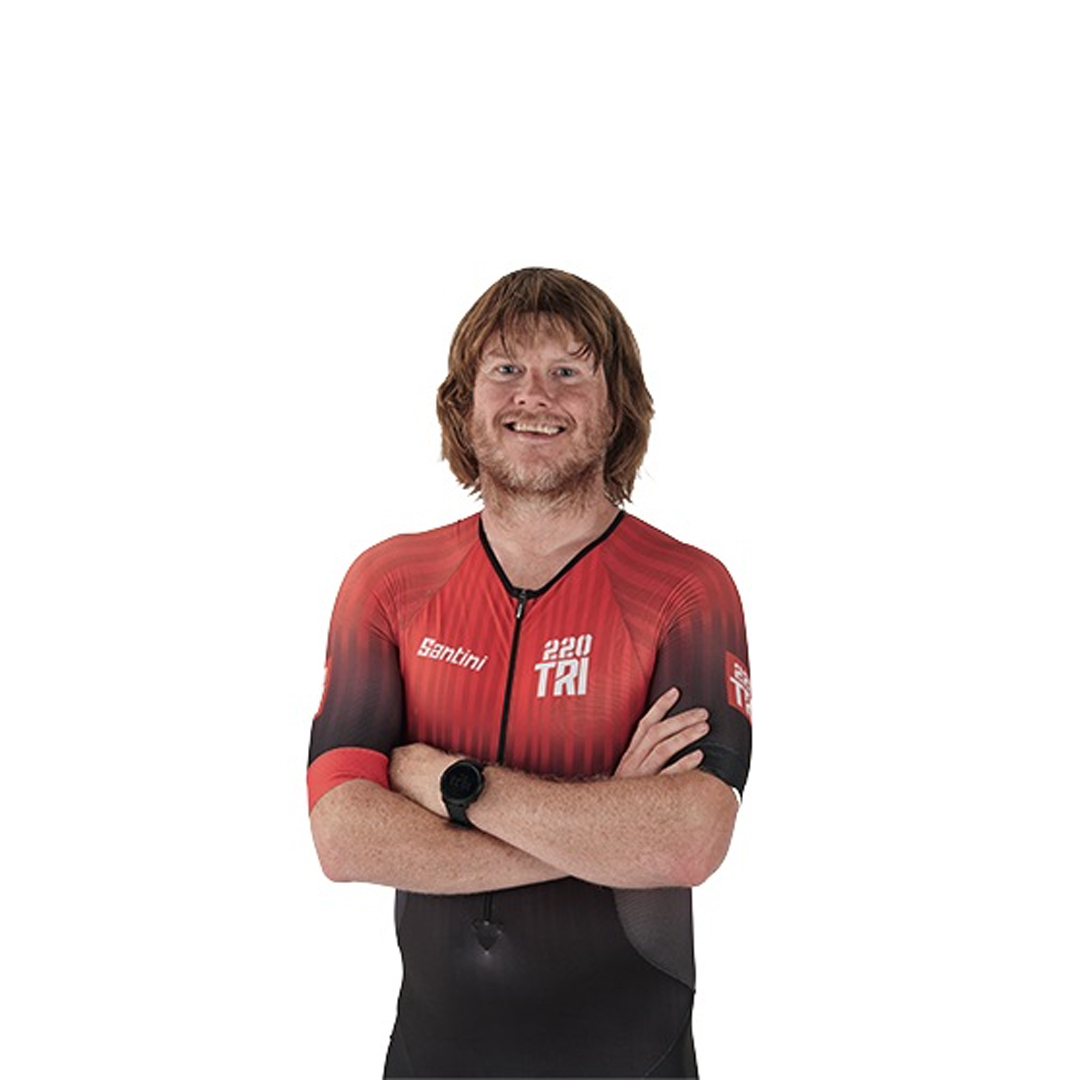Fingers crossed, the 2022 race season will be back to pre-pandemic levels of normality. So, with that in mind, it's time to start looking at the psychological strategies that will turn your goal-setting into goal-getting...
“The main factor is choosing a goal race that really motivates you. The desire to perform at your goal race is what will keep you going in those training sessions where you struggle for motivation.” When it comes to kickstarting your 2022 multisport season, David McNamee ignores all the noise and lays down the key driver that’ll have you creaking out of bed for three-hour rides in the rain.
With two, third-place Ironman Worlds finishes behind him, who are we to disagree? In fact, we don’t. But as McNamee says, this is the “main factor”. Over the page are a host of other factors that’ll make or break your season, beginning with the importance of acronyms…
- David McNamee's top Ironman tips and training sessions
- 70.3 bike tips and sessions from David McNamee
Smarter or scaled up

Regular readers will be aware of the SMARTER framework. This breaks down as: Specific – make each goal as precise as possible; Measurable – how you quantify your current position and determine the improvement required; Accepted – goals need to be shared and negotiated with others; Realistic – the goal is realistic yet challenging; Time phased – date is set for when the goal is to be achieved by; Exciting – must motivate; Recorded – the goal and progress toward it written down.
It’s a proven base to build performance. But not the only one… “I use the SCALED UP model,” says Dr Josephine Perry, sports psychologist and age-group triathlete. “It’s similar but with a few tweaks. It’s: Specific; Clear, so you’re not tempted to change when it gets hard; Achievable; Layered – when we focus only on outcome, we develop unrealistic future expectations and these reduce our confidence, increase anxiety, stop us putting so much effort in and cause poor performance.
“It’s the performance and process goals [of which more to follow] that help us develop more realistic expectations; Exciting; Deadline – sometimes life gets in the way of our sport, deadlines help us stay on track; U – focused as much as possible on things you can control; Positive – focusing on what you’re trying to achieve, not on what you want to avoid.”
Whichever model you choose, working your way through each will begin firming up your ambitions and plans. Realism aligned with ambition’s what you’re after. So say you were 500th overall at Ironman Wales, finishing top-20 the next year might be a little optimistic and motivation will soon plummet. It’s a similar own goal if you were 500th overall at Ironman Wales and your new goal is to finish 800th.
Race and goal planning

Right, race ambitions pencilled in. But how do you fill the space between now and then? Well, build-up races are a good start.
“I like to complete at least one race before one of my goal Ironman events around six weeks before,” says McNamee. “And it doesn’t always have to be a triathlon. I raced Ironman South Africa in April 2017 and because there weren’t other triathlons beforehand, I completed a local half marathon instead. It’s great to break away from the training cycle, go through the process of racing and get that extra boost of motivation before the final push towards your goal race.”
A more detailed breakdown of this race planning comes in the form of the A, B, C model. The ‘A’ race is your priority event(s). For the majority of athletes, this’ll be in the second half of the season and involves a taper. It’s where you intend to peak from your training and B/C races.
‘B’ races are events that you’d like to do well in but don’t possess the importance of A. You’ll rest for a few days before each of them, but not build to a peak. You can select as many as six of these.
Finally, the ‘C’ races. These are either done for ‘fun’, act as a progress report or a final short hit before your ‘A’ race.
Right, the skeleton of your season’s coming along. Now we’ll add a little more meat to the bone via the three layers of goal-setting: outcome, performance and process goals. “Outcome goals are often the ultimate aim but outside of your control. For example, winning your age-group,” says coach Andy Bullock. “Despite your best performance, it’s possible that you don’t achieve your goal because others simply perform better.
“Then there are performance goals, which are more under your control. Using time-based goals here can be helpful. For example, swim, bike and/or run in a set time, although again it’s worth remembering that if the weather conditions are tough it might mean your performance goals aren’t possible on that particular day.
“Finally, we have process goals. These are the things we do day in day out – getting enough sleep, eating properly, competing the session as planned. Put these small steps together and they become the foundation for reaching the performance goals.
Process goals can also be performance goals along the way. E.g, if you hit ‘X’ time in three months’ time, then you know you’re on the way to achieving ‘Y’ time in six months. Using this strategy is a really good way of breaking down a large goal into smaller steps and allowing you to see progress along the way.”
Maintaining motivation

This is all designed to edge you ever closer to making your dreams come true. Arguably, it’s all a little too neat. Motivation’s a temperamental beast. Throw in the chaotic world we call ‘real life’ and clear January goals can soon become foggy as the year and its travails roll on.
“That’s where an online training platform [like TrainingPeaks and Golden Cheetah] comes in,” says NcNamee. “I have a clear countdown of how many weeks until my next event and grow confidence in looking back on the training I’ve already done. Also, when you need that extra hit of motivation, I like watching past editions of my goal race on YouTube.”
Heart rate monitors, power meters and images of your goal race on your fridge are further motivational shots in the arm with further suggestions in the ‘Keep the fire burning’ box, right.
“Try not to fret if you miss a session or two,” McNamee continues. “In fact, missing a session is sometimes a good thing, as the vast majority of us are always on the verge of doing too much. With an injury, it’s always tough but it’s about focusing on what you can do rather than what you cannot. I’ve seen people have major breakthroughs when they haven’t been able to run for a month by spending extra time and effort in the pool or on the bike.”
So we’re there – you now have a bulletproof system to smash your goals in 2022. Maybe not. “If you can’t forge positive habits to many situations, things can unravel quickly,” says acclaimed sports psychologist (and Lesley Paterson’s husband) Simon Marshall. “We’ve all quit stuff. Sometimes these are legit quits like quitting halfway through a training run because of a searing pain. Unfortunately, legit quits are rare, making up about 10% of all quitstances (yes, I made that word up).
“Now let’s look at a different kind of quit, the fake-ass quit (FAQ). You know you’ve experienced an FAQ because it comes with regret after the quitisode (another one!). Only you know if you’ve used a legit quit or an FAQ.
“The trouble is, your brain tries to rationalise both kinds of quitting because your brain’s priority is to restore equilibrium: the comfort and contentment that comes from knowing that your thoughts match your actions.
“Sadly, there’s nothing comforting about knowing you gave up when you secretly know you shouldn’t have. Psychologists call this mental turmoil ‘cognitive dissonance’. By mentally throwing in the towel, you’ve just slapped your brain across the chops.” Thankfully, there are ways to rewire your brain to crank up your chances of success. Back to Marshall. “Here are a few science-based strategies to help you stop experiencing the quits…”
Top tips for avoiding the quits
Cognitive priming
Before every challenge, you want to help your brain produce [happy hormone] dopamine. A great way to open the floodgate is to watch and listen to inspirational stuff on YouTube.
Segment the s**t out of your challenge
Your brain likes things in manageable chunks to persist through the hard times. When the s**t hits the fan, our brain pleads with us to not think too far in the future. So… ‘I can’t get through eight weeks of solid exercise, but I can get through today.’ ‘I can’t endure 60mins of this, but I can do 10mins.’ The neurological beauty of segmentation is that once the segment is completed, you get a mini squirt of dopamine (happy juice) that resets the ability clock.
Early mornings are almost always better for exercise
Neuroscientists have discovered that we find it harder to take on a challenge later in the day. This is because the part of your brain responsible for self-control (the anterior cingulate cortex) tires just like a muscle. So if you’re lucky enough to have a choice, hit the gym when your anterior cingulate cortex is at its best – early in the morning.
Request a nudge
Group exercise is motivating because it reduces our perception of effort, creates accountability and offers loads of opportunity to give and receive praise. We’re there. You’re now armed with goal-setting, motivational and habit-forming tips to make 2022 your best season yet. One final tip? Subscribe to 220 Triathlon for a four-weekly hit of dopamine!
After more motivation? Here are 25 ways to stay motivated...
